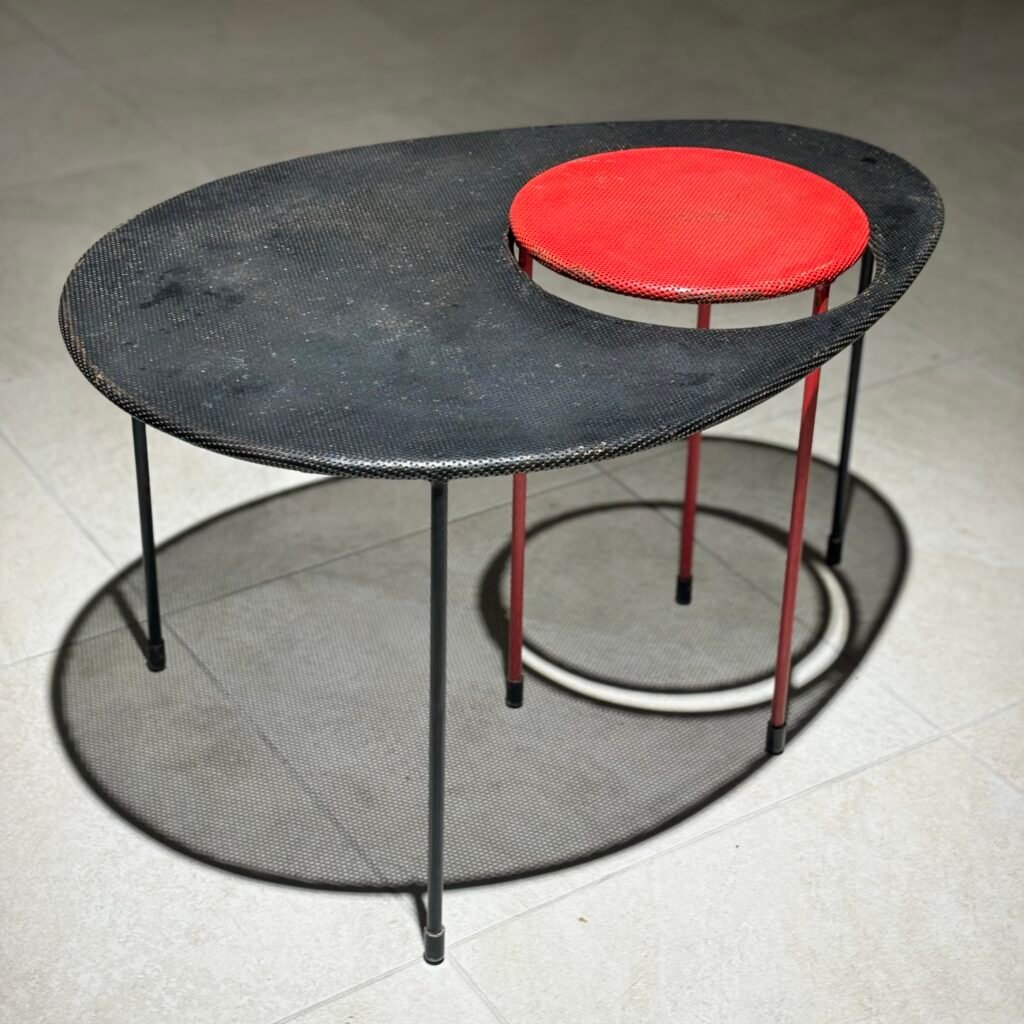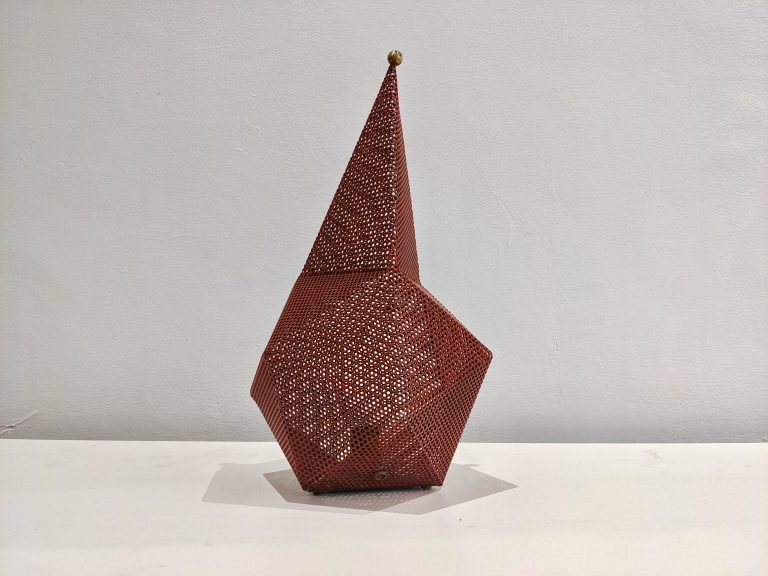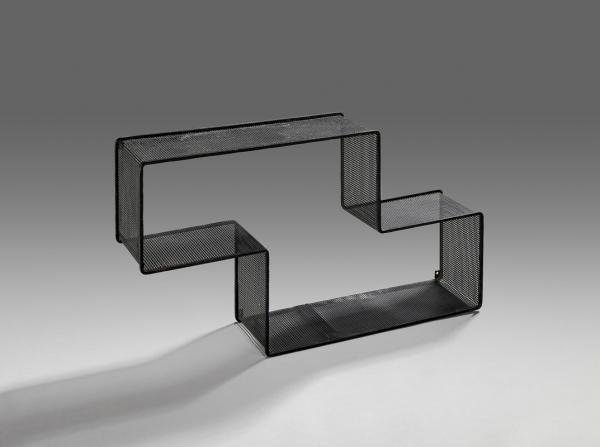Mathieu Matégot

His Biography
Mathieu Matégot is a Hungarian/French designer born on April 4, 1910. He is known for his avant-garde approach to shapes and materials. He is the father of “Rigitulle”, a term for thin perforated sheet metal, which he himself patented in 1952. He loves this material for its play of light, for all its small holes, and will therefore play with it by folding it, crumpling it, giving it an almost organic shape and often through the colors red, blue, yellow and black. He will combine this element with others, such as rattan. His impingements are graphic and his lines drawn with great elegance. According to him, a piece of furniture must be suitable for both indoor and outdoor use.
From 1925 to 1929, he studied at the School of Fine Arts and Architecture in Budapest. Upon graduating, he created sets for the National Theatre and then traveled for two years in Italy and the United States before returning to France in 1931. It was there that he found his first positions in the profession: creating sets for the Folies Bergère, window dressing at Galeries Lafayette, designing women’s dresses, and tapestry. In 1933, he began experimenting with a very fashionable element at the time: rattan. He created the first examples of furniture mounted on metal frames. During the Second World War, he volunteered but was taken prisoner in Germany. During this period, he worked in a factory manufacturing mechanical accessories, where he learned the techniques and potential of sheet metal. He was released in 1944.


After the war, Mathieu Matégot opened his own workshop in Paris , manufacturing handmade furniture, using materials he is now a pioneer in thanks to his experience: metal, rattan, Formica, and especially perforated sheet metal. He then moved his workshop to Casablanca. His furniture was distributed in decoration stores in editions of 200. He made a name for himself through the manufacture of small furniture and everyday objects in perforated metal, to which he gave all sorts of shapes (umbrella stands, baskets, flowerpots, etc.). He also furnished and decorated renowned buildings, such as the Hôtel de France in Conakry, Guinea, the Drugstore Publicis in Paris, and the Maison de l’ORTF in Paris.
Mathieu Matégot is also known for his lighting fixtures that create a real atmosphere in the room: satellite pendants made of an ovoid shell in rigitulle completed with a reflector in folded sheet steel. The Bagdad table lamp from 1954, for example, was rarely produced but allowed him to achieve auction records (between €15,000 and €25,000) and are today very rare pieces. In 1952, he exhibited his work at the Salon des Artistes Décorateurs d’Automne, which brought him great success. In 1960, he left design and devoted himself solely to tapestry, where he became one of the leaders of the modern movement in France. His tapestries can be found today in many large buildings.
